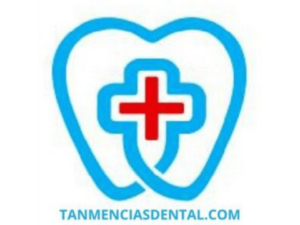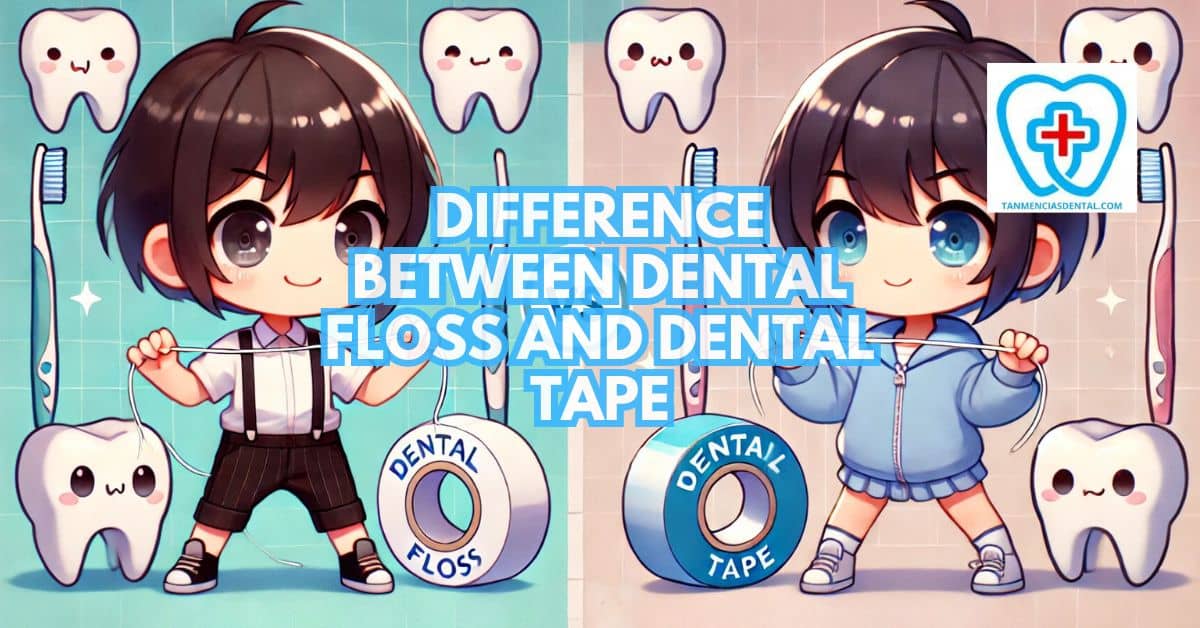Dental floss and dental tape are both effective tools for maintaining oral health by cleaning between teeth where a toothbrush can’t reach.
The difference between dental floss and dental tape lies mainly in their shape and how they are used.
Dental floss is typically thinner and round, while dental tape is broader and flatter.
Choosing the right one depends on your personal dental needs, such as the spacing between your teeth.
Understanding these differences can help improve your dental hygiene routine and support long-term oral health.
1. What Is Dental Floss?
Dental floss is a thin, waxed, or unwaxed piece of cord made primarily from nylon or Teflon, designed to remove food particles and plaque from between teeth.
It is very effective in tight spaces where teeth are close together.
Flossing daily is recommended by dentists to prevent the buildup of plaque that can lead to tartar, a major cause of gum disease.
Because of its slim profile, dental floss can penetrate deep between teeth where toothbrush bristles cannot reach.
Its use is a cornerstone of basic dental care and pivotal in maintaining the health of both teeth and gums.
🦷 Unlocking Your Perfect Smile: Essential Tips for Cleaning Teeth After Braces Removal
2. What Is Dental Tape?
Dental tape is a wider, flatter alternative to traditional dental floss, resembling a ribbon.
It is preferred by individuals with more space between their teeth or those who find traditional floss too harsh on their gums.
The broader surface area of dental tape allows for a more thorough cleaning in larger gaps, effectively removing plaque and debris.
Its gentle nature on the gums makes it suitable for people who experience irritation with regular floss.
Dental tape can be waxed or unwaxed and often comes in various flavors to enhance the user experience.
🦷 From Hygiene to Assistance: Can a Dental Hygienist Transition to a Dental Assistant Role?
3. Examining the Key Differences: Dental Floss vs. Dental Tape
The primary difference between dental floss and dental tape is in their shape and texture.
Dental floss is usually thin and round, making it easier to slide into tight spaces between teeth, which is ideal for people with closely spaced teeth.
On the other hand, dental tape is flatter and broader, offering better coverage for individuals with larger gaps between their teeth.
Dental tape also tends to be gentler on sensitive gums, as its wider surface area can reduce the risk of irritation.
When incorporating dental floss or tape into your oral care routine, it’s important to consider your specific dental needs and comfort level.
Floss picks, which often come with either floss or tape, provide a convenient way to clean between teeth, especially for those who find traditional floss difficult to use.
Choosing the right tool, whether dental floss, tape, or floss picks, can enhance your daily dental care and help maintain healthy gums and teeth.
🦷 Behind the Mask: What Is a Dentist Uniform Called? A Deep Dive into Dental Apparel Essentials
4. Types of Dental Floss
Dental floss comes in a variety of types to suit different preferences and needs.
The most common types are waxed and unwaxed, which differ mainly in ease of use; waxed floss slides between teeth more smoothly, making it easier to use in tight spots.
Flavored floss, such as mint or cinnamon, offers a pleasant taste that can make flossing a more enjoyable experience and encourage regular use.
There are also specialized flosses, such as those designed for braces or dental bridges, which feature stiffer ends to navigate around dental appliances.
Selecting the right type of floss can enhance your comfort and effectiveness in daily dental care routines.
🦷 The Hidden Truth: Do Braces Really Cause Gingivitis? Exploring Orthodontic Treatment and Gum Health
5. Benefits of Using Dental Floss
Regular use of dental floss is instrumental in removing plaque from areas a toothbrush cannot reach, particularly between the teeth and under the gumline.
This helps prevent the formation of cavities and periodontal disease, which are common issues associated with inadequate oral hygiene.
Flossing also helps to prevent tartar buildup, which can lead to gingivitis and other gum diseases if left untreated.
Beyond health benefits, flossing contributes to fresher breath by removing trapped food particles that cause bad odors.
Thus, daily flossing is a critical component of thorough oral hygiene practices.
🦷 Spotting Trouble Early: How to Identify Broken Tooth Decay Before It Becomes a Major Concern
6. Benefits of Using Dental Tape
Dental tape is especially beneficial for those with wider gaps between their teeth, where traditional floss might not perform as effectively.
Its broader and flatter design covers a larger surface area, ensuring a more thorough cleaning between larger spaces.
People with sensitive gums often prefer dental tape because it is gentler and less likely to cause irritation compared to thinner floss.
It is also generally easier to handle and maneuver, making it a good option for those new to flossing or those who find fine floss difficult to grip.
Regular use of dental tape can significantly enhance gum health and overall dental cleanliness.
7. Finding the Right Tool for Your Smile: Benefits of Dental Floss and Dental Tape
Choosing between dental floss and dental tape largely depends on your individual dental needs and personal preferences.
For those with tightly spaced teeth, dental floss may be more effective at cleaning the small gaps.
Conversely, dental tape might be a better option for those with larger spaces or sensitive gums.
Trying both types can help you determine which feels more comfortable and works best for your dental configuration.
The right tool for your smile is one that you will use consistently, ensuring comprehensive cleaning and maintenance of your oral health.
🦷 Emergency Dental Care: What to Do When You Have a Broken Tooth with an Exposed Nerve
8. Who Should Use Dental Tape?
Dental tape is particularly suitable for individuals who find traditional dental floss too thin or challenging to use.
It is an excellent choice for those with larger gaps between their teeth, where a wider cleaning tool can be more effective.
People with sensitive gums also benefit from the gentle nature of dental tape, as it is less likely to cause irritation during use.
Additionally, dental tape can be easier for beginners to handle, making it a friendly option for those just establishing their flossing habits.
If you struggle with gum bleeding or discomfort from regular floss, switching to dental tape might alleviate these issues.
🦷 Beyond Brushing: Discover Proven Tips for Maintaining Healthy Teeth Without the Toothbrush
9. Special Considerations for Dental Conditions
Different dental conditions can affect whether floss or tape is the better choice for you.
For example, people with braces might find dental tape easier to use because it can move around brackets and wires more smoothly.
Those with bridges or dental implants may prefer floss designed with tools like floss threaders to clean effectively around these structures.
If you have gum disease, dental tape is often gentler on sensitive gums and can help reduce irritation.
In addition, alternative tools such as interdental brushes or water flossers can be useful for maintaining oral hygiene when traditional floss or tape is challenging to use.
🦷 Navigating Your Health: Dentist vs. Doctor—Which Expert Should You Turn To for Your Concerns?
10. Expert Advice: How to Use Dental Floss and Dental Tape Effectively
To maximize the benefits of dental floss or dental tape, use a gentle “rocking” motion to guide the floss or tape between each tooth, down to the gum line.
It’s important to curve the floss around the base of each tooth, making a ‘C’ shape, and gently slide it under the gumline to dislodge any trapped food particles and plaque.
Avoid snapping the floss or tape into the gums, as this can cause damage and discomfort.
Ensure you use a fresh section of floss or tape for each tooth to avoid reinserting bacteria.
Regular flossing—once a day, ideally before bedtime—will help maintain your dental health and prevent gum disease.
🦷 It’s Never Too Late for a Dazzling Smile! Is It Too Late to Start Brushing My Teeth?
11. The Importance of Oral Hygiene: Choosing Between Dental Floss and Dental Tape
Maintaining good oral hygiene is crucial for overall health, and choosing the right tools to support your dental care routine is key.
Whether dental floss or dental tape is more suitable for you depends on your mouth’s anatomy and personal comfort.
Both tools are effective at removing plaque and preventing gum disease, but your individual needs should guide your choice.
Regular use of these tools is part of a broader commitment to oral health that includes brushing, rinsing, and periodic dental checkups.
Making an informed choice about your dental care products will support your long-term dental health and wellness.
🦷 Demystifying Dental Care: Dentist vs. Orthodontist—What’s the Difference and Why It Matters
👨⚕️ Conclusion
The difference between dental floss and dental tape may seem small, but choosing the right one can significantly impact your oral hygiene routine.
Both are effective tools in the fight against plaque, tooth decay, and gum disease, but the best choice depends on your specific dental needs and comfort.
Consulting with a dental professional can also provide personalized recommendations based on your oral health.
Remember that the most effective dental care tool is the one you use consistently, so pick one that fits your lifestyle and preferences.
By making an informed decision, you can ensure your smile stays healthy and bright for years to come.
😊 Self-Promotion
Visit us at Tan-Mencias Dental Clinic in Parang, Marikina City, where your smile and dental health are our top priorities!
Our friendly and professional team is here to provide you with top-notch dental care in a comfortable and welcoming environment.
You can easily reach out to us with any questions or to schedule an appointment—simply call us at 9171451074, send a message through our Facebook page, or use the contact form on our website.
We’re committed to making your dental experience as smooth and positive as possible.
We look forward to helping you achieve your best smile!

